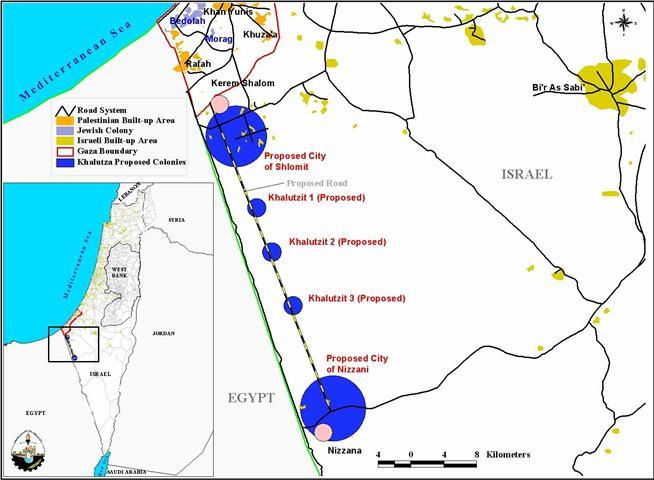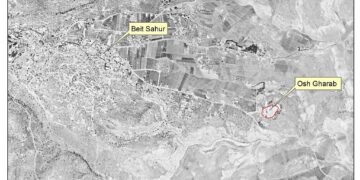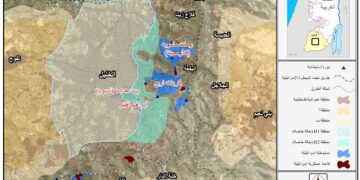The Israeli government is having a plan to construct 5 new settlements in Rimal Halutza (Khalutsa sands) located near the Egyptian borders to the south of Gaza Strip (Haaretz Israeli daily newspaper, 20/12/2002). The location is planned to attract around 15,000 Israeli citizens on an area of 80,000 dunums that constitutes the proposed master plan for the project. In April 2003 the project planning agency will start to prepare a detailed plan and future urban development plans for the area, where according to Israeli estimates the construction works will start in a year.
The Israeli plan is to construct a new Israeli city to be called Shlomit in the area of Kerm Shalom located south of Rafah in Gaza Strip. The small Israeli settlement of Nizzana will be expanded and will form the new Israeli city of Nizzani. Another 3 Israeli settlements will be constructed between the two above-mentioned cities and to be called Khalutzit 1,2,3. A road will connect Shlomit to Nizzani passing through the three Khalutzit. See map
During the Israeli-Palestinian negotiations in Camp David 2000, there was the idea of land exchange so as to reach to a compromise to the conflict. The offer was to exchange 150 Km 2 from Rimal Khalutsa to be given to Palestinians, in return Israelis will keep certain colonial blocks in the West Bank.
On the 19th of December 2002, the Israeli PM Ariel Sharon visited the Negev Area and approved on planning the above-mentioned project. The idea behind the project is to abort any possibility of land exchange with Palestinians in the future, Sharon said to the Israeli media. In reality, this plan is also having another aspect, which is the full Israeli control over the Israeli-Egyptian borders. Recently, Nitzana residents were asking the IOF to install an electric fence on the borders with Egypt, and to increase barriers on that border to prevent the possibility of any future attacks coming from the Egyptian borders.
The full control of the Israeli-Egyptian borders by Israel means also an essay to change the borders of Gaza Strip before Israel relinquishes the majority of settlements in the Strip. The city of Rafah that is located near the Egyptian border is having serious socio-economic problems due to the fact that the Western-Egyptian part is isolated from the Eastern-Palestinian part of the city where the border is mainly controlled by the Israelis.
Prepared by:
The Applied Research Institute – Jerusalem













